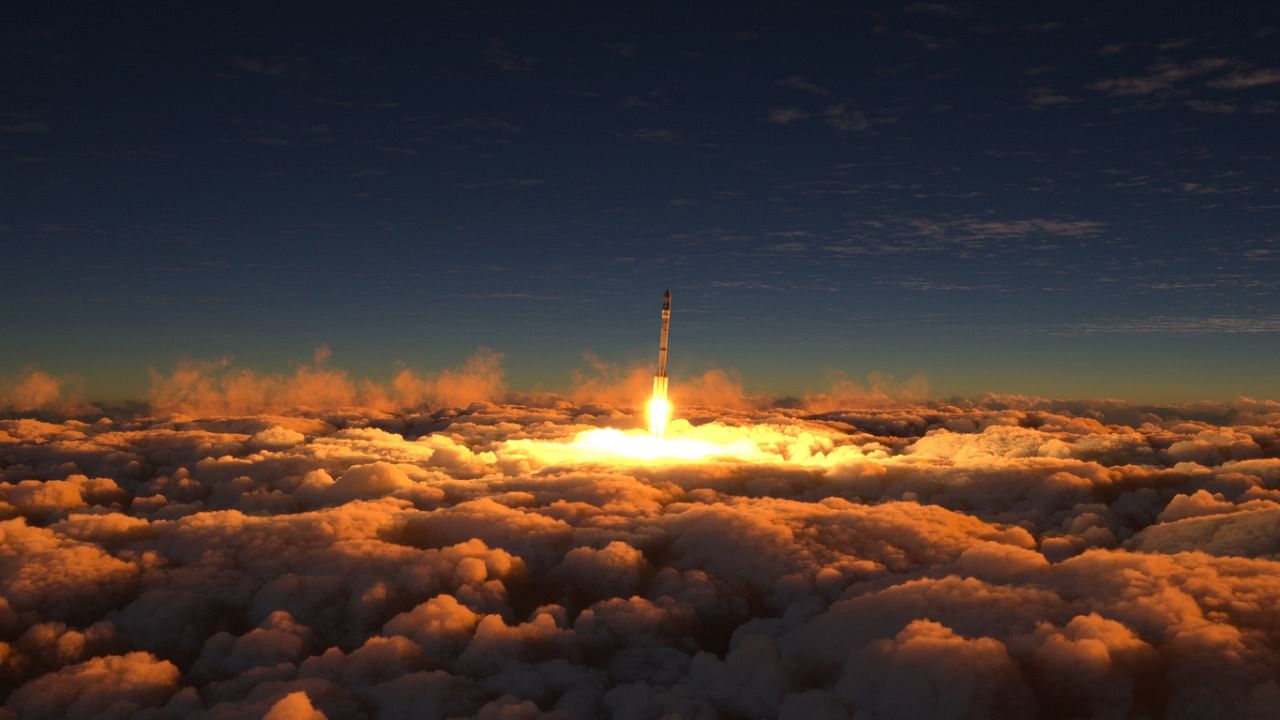
Representative image of a rocket.
Credit: iStock Photo
A commercial Chinese rocket accidentally launched during a ground test on Sunday, climbing into the air before crashing into a nearby mountain and exploding in flames, the private company that owns the rocket said.
Because of a "structural failure," the Tianlong-3 rocket separated from its testing platform while its propulsion system was being tested and lifted off from its launchpad, the rocket's owner Space Pioneer said in a statement. The accident occurred at 3:43 pm local time Sunday at a test facility in Gongyi city in central China's Henan province, the statement said.
After launching, the onboard computer automatically shut down, and the rocket fell into a hilly area about one mile from the test site, the statement said. No one was injured, the statement said, adding that the crash site was far from residential areas and the company had worked with local authorities before the test to evacuate nearby areas.
Videos posted by Chinese news media and on social media appeared to show the rocket climbing before it loses power and plunges, exploding in a nearby hill.
The Gongyi municipal government said in a social media statement that the rocket's crash started a fire, which had been put out by Sunday evening.
The accident seems to have occurred during a static fire test, when the engines are ignited as if for takeoff but the rocket remains secured to the ground, said Brad Tucker, an astrophysicist at the Australian National University who reviewed videos of the accident. It was a very routine test, he said, adding that although it is often done with the rocket horizontally, some companies, including SpaceX, have done the test vertically.
"It's so common that it's a surprise that this sort of failure occurred," Tucker said, adding that the only other comparable accident he was aware of occurred in 1952 when a US Viking 8 rocket broke free during a static fire test and landed in the desert five miles away.
"Multiple things probably would have had to go wrong for this failure to happen the way it did," Tucker said, adding that although China's national space program was advanced, its commercial space industry is fairly young.
That commercial industry has expanded rapidly in recent years alongside the government's growing space ambitions. This year, for the first time, commercial spaceflight was listed as an emerging industry to be actively fostered in the Chinese government's annual work report, the key policy document outlining the government's priorities for the year.
Space Pioneer, also known as Beijing Tianbing Technology, is a major player in that industry. The Tianlong-3 rocket, the most powerful carrier rocket currently in development in China, is custom-built to help construct the nation's satellite internet system, according to Space Pioneer.
Last month, China became the first country to retrieve rock samples from the far side of the moon. It aims to put a person on the moon before 2030, which would make it the second nation to do so after the United States. And it has successfully launched a mission to Mars and has plans for a future visit to an asteroid.
Last year, Space Pioneer's Tianlong-2 -- Tianlong-3's predecessor -- became the country's first commercial liquid carrier rocket to successfully enter orbit, according to state media.
According to Space Pioneer, Tianlong-3 is comparable to SpaceX's Falcon 9, the first orbital-class reusable rocket. Designed to transport crew and cargo into Earth's orbit, Falcon 9 became the first commercial rocket to launch astronauts into orbit in 2020.